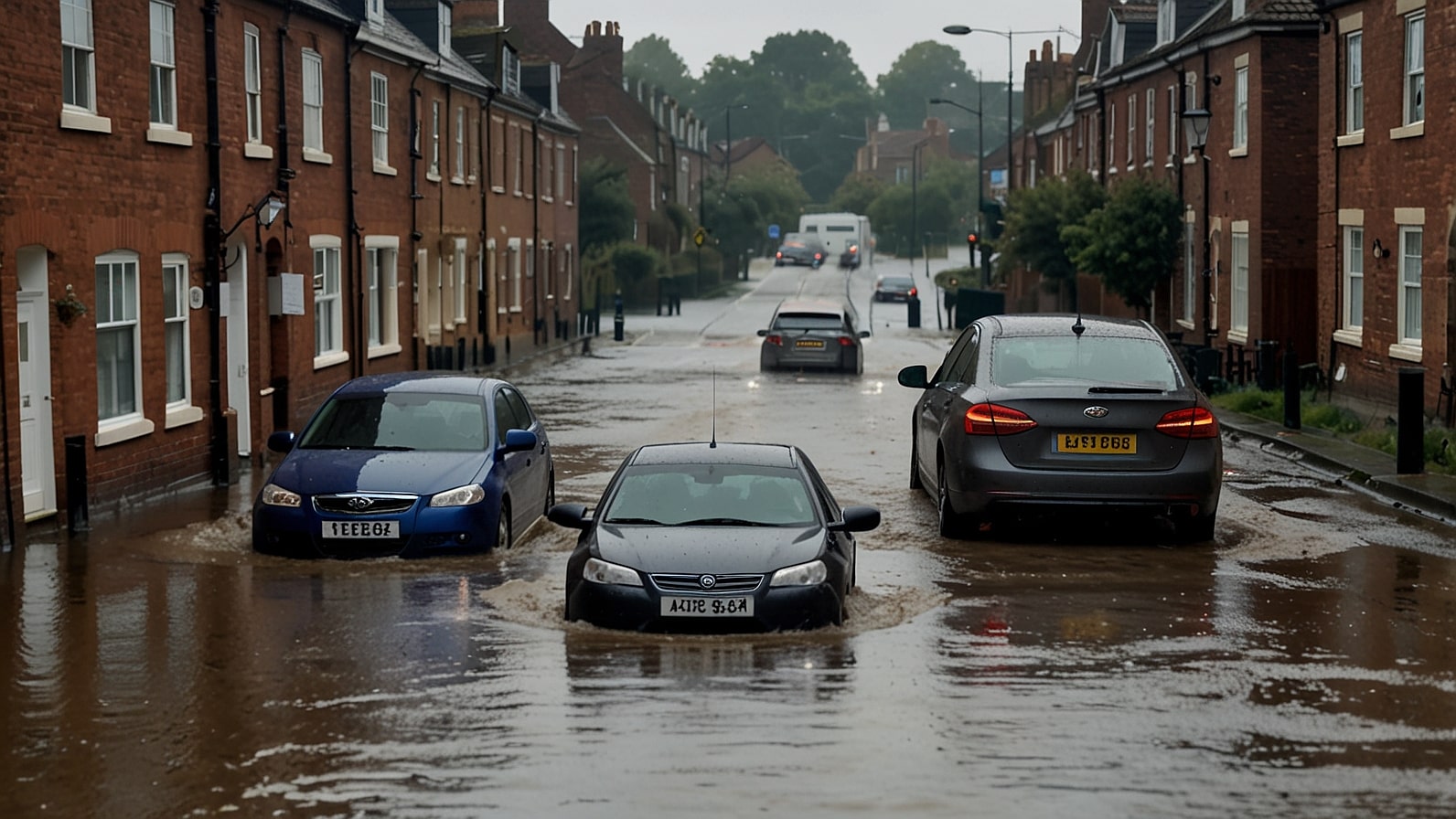Northern England is in a crisis following Storm Elara, the storm with the highest intensity that affected Yorkshire, Lancashire, and Cumbria in more than ten years on July 26, 2025. Having recorded wind gusts of 90 mph, coupled with heavy rainfall that has led to flooding, the storm has left residents of areas stranded due to the destruction of homes, transport disruption, and loss of power to more than 150,000 homes.
Due to the escalating recovery efforts, the government has promised state emergency financing, and community heroes and volunteers have become the frontrunners of rebuilding. As Elara closed in, the Met Office recently issued a rare red weather warning, which advised people to stay indoors.
The intensity of this storm pulled down centuries-old trees, blew off building roofs, and caused landslides in the Pennine Hills. York River Ouse flooding York, the River Ouse breached its banks, flooding historic street centres, and requiring evacuations. Human loss is mercifully minimal, as there are only two lost lives- a painful reminder of how nature is unpredictable.
Destruction and Catastrophe
The extent of the damage cannot be imagined. In Leeds, a rooftop at one of the primary schools collapsed, and an accident could have happened as the classes were cancelled. Coastal towns in Lancashire (such as Blackpool) were severely hit, with piers and promenades destroyed and waves dashing over sea defenses.
Areas like Cumbria, which are still recovering after the Storm Desmond of 2015, were once again flooded, with villages like Keswick registering a second impact, which rekindled the discussions about flood resilience.
Transport networks come to a halt. The Northern Rail canceled all train services, with some tracks blocked by debris and floods. One of the most important ways, the M62 motorway was said to have been shut down when a lorry overturned due to high winds.
The number of canceled Flights at Manchester Airport has been reported to be dozens, and this has left passengers stranded. Efforts were made by power companies, who operated around the clock to fix electricity, but the powerless areas were far off and without power even after days.
Towns Become Organized
The chaos has resulted in triumphant tales. In Hebden Bridge, a town affected by flooding, volunteers were organizing human chains of rescuers to reach stranded people and deliver supplies.
Shelters were opened in local businesses, many of which have not yet bounced back after the former floods. A group of farmers in Carlisle was singled out for praise by the authorities after clearing roads with the help of tractors. Such actions of solidarity have turned out to be a light in the eye of the storm aftermath.
Social media has only enhanced such initiatives, and tags such as #ElaraHeroes appeared at the top of the charts. The tight-knit spirit in the region is evident in a crowdfunding campaign initiated by a Yorkshire charity, which has raised over 200,000 pounds to support affected families. Temporary food, blankets, and housing have been given through emergency relief centers established by local councils.
Government Reaction and Criticism
On July 29, Prime Minister Rachel Thompson toured flood-stricken regions and declared a one-time payout of 50 million pounds to help the recovery. The package contains grants to homeowners, businesses, and infrastructure repair.
Thompson also said that flood defenses would be reviewed, as increasingly, these kinds of risks happen as a result of climate change. Critics say the conversation is not enough. Opposition leader, Tom Hargrov,e said that the government was responding late and that it should invest in flood prevention to the tune of £1 billion.
Environmental organizations also expressed this fear, saying that there was poor planning. The Green Alliance noted that 30 percent of the flood defense systems in northern England are outdated and the communities are thus at a loss. Computer models are showing that with no action, storms like Elara may be the new climatic normal as the world gets warmer.
Economic and Environmental Effects
The economic cost is yet to be determined, but the early estimates show damages of more than 1.2 billion. This winter looks grim for small businesses in such tourism-oriented regions as the Lake District.
Farmers are complaining about theft of livestock and destruction of crops, and this comes on top of post-Brexit trade problems. Insurance companies are preparing to handle a large number of claims, with some discovering that their insurance covers not only flood damage.
The storm has also scarred the environment. Rivers washed away pollutants into farmland, which threatened the ecosystems. In the Yorkshire Dales, erosion caused landslides, which destroyed the protested habitats, and reforestation was urged to control the soils. The Environment Agency is monitoring water quality and has also warned of the health hazards due to water contamination by floods.
Looking Forward: Rebuilding and Resilience
Northern England has an uphill cheer ahead as the cleanup process goes on. Engineers are working on restoring essential infrastructure, and the charities are handing out assistance to those in need.
The government says it is committed to accelerating planning of new defenses against flooding, but no schedules have been provided. There is a push by community leaders to ensure there are more long-lasting solutions to the floods, like the use of wetlands and tree planting to manage the flow of water.
Storm Elara has challenged the will of the region and affirmed its power. Volunteers who go through flooded waters to neighbors sharing resources give the human spirit a shine.
That is how Sarah Patel, a resident of Cumbria, who has lost her own home, said: “We have been kicked down, and we will dust ourselves up, again.” The destruction the storm might have left behind it does not mean that a resilient future is not being shaped ,because it is being ignited by resolve on how to be strong to make the future disaster-free.

Leave a Reply